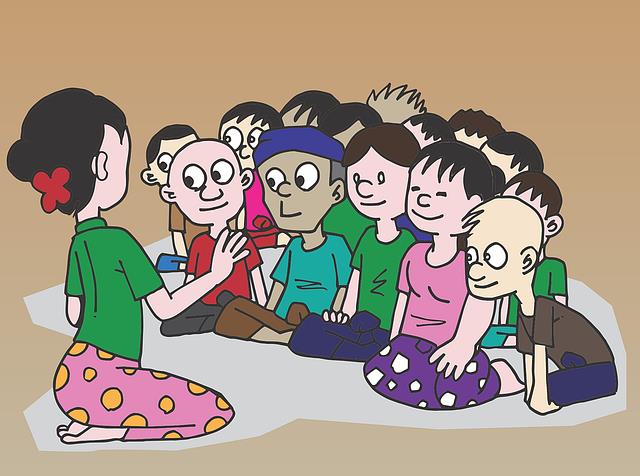
In this article, we will explore the eight beneficial aspects of shared learning:
- Peer learning
- Collaborative learning
- Cooperative learning
- Reciprocal learning
- Mutual learning
- Learning communities
- Group projects
- Team-based learning
As education continues to evolve, these methods offer effective ways to enhance knowledge acquisition, critical thinking, and problem-solving skills.
By embracing these approaches, individuals can foster an environment of freedom and exploration, enabling them to thrive in their personal and professional endeavors.
Join us as we delve into the transformative power of shared learning.
Peer Learning
The article explores the benefits of peer learning in various educational settings. Peer learning, also known as collaborative learning, is a teaching method that encourages students to work together to achieve a common goal. This approach fosters an environment of active engagement, where students can learn from one another through discussion, problem-solving, and critical thinking.
The benefits of peer learning are numerous. Firstly, it promotes a deeper understanding of the subject matter as students can clarify their doubts and gain different perspectives. Secondly, it enhances communication and interpersonal skills, as students learn to effectively express their ideas and listen to others. Additionally, peer learning encourages teamwork and cooperation, skills that are highly valued in the professional world.
Collaborative Learning
Building upon the benefits of peer learning, collaborative learning is another valuable teaching method that encourages students to work together towards a common goal, fostering active engagement and promoting deeper understanding of the subject matter.

In collaborative learning, students actively participate in group discussions, sharing their ideas, perspectives, and knowledge with their peers. This approach provides a platform for students to learn from one another, expanding their understanding through the exchange of different viewpoints.
Additionally, collaborative learning promotes critical thinking skills, as students are challenged to analyze and evaluate the ideas presented by their peers. It also enhances communication and interpersonal skills, as students learn to effectively express their thoughts and opinions in a group setting.
Cooperative Learning
Cooperative learning is an instructional approach in which students work together in small groups to achieve a common goal. It encourages active participation, engagement, and interaction among students, promoting a sense of belonging and community within the classroom.
Benefits of Collaboration
Collaborative learning offers numerous benefits to learners, fostering the development of essential skills and promoting a deeper understanding of the subject matter. Here are some advantages of cooperation in the learning process:
- Enhanced critical thinking: Collaborating with peers allows learners to engage in discussions, share ideas, and challenge assumptions, leading to a more robust and comprehensive understanding of the topic at hand.
- Improved communication skills: Working in groups requires effective communication, promoting active listening, clear articulation of thoughts, and the ability to collaborate effectively with others.
- Increased motivation and engagement: Collaborative learning encourages active participation, as learners feel more motivated and engaged when working together towards a common goal.
- Development of interpersonal skills: By working in teams, learners develop important interpersonal skills such as conflict resolution, negotiation, and empathy.
- Preparation for the real world: Collaborative learning mirrors real-life situations where individuals must work together in diverse teams, preparing learners for future professional environments.
Effective Group Learning?
Effective group learning can be achieved through the intentional and purposeful integration of cooperative strategies. One of the key elements for successful group learning is group cohesion. When students feel connected and supported within their group, they are more likely to actively participate and engage in the learning process.
Group cohesion can be fostered through various strategies, such as team-building activities, clear roles and responsibilities, and establishing a positive and inclusive learning environment.
Active participation is another crucial factor in effective group learning. When students actively contribute and collaborate with their peers, they deepen their understanding of the subject matter and develop important teamwork and communication skills.

Encouraging active participation can be done through structured activities, like group discussions, problem-solving tasks, and peer teaching.
Reciprocal Learning
Reciprocal learning involves the exchange of knowledge and insights between learners through a mutual process of teaching and learning. It is a dynamic approach that encourages active engagement, collaboration, and the sharing of ideas within learning partnerships.
In reciprocal learning, learners take turns assuming the roles of both the teacher and the student. This allows for a deep understanding of the subject matter and promotes critical thinking skills.
Here are five key aspects of reciprocal learning:
- Active participation: Learners actively participate in the teaching and learning process, enhancing their understanding and retention of information.
- Reflection: Reciprocal learning encourages learners to reflect on their own knowledge and understanding, leading to a deeper level of comprehension.
- Feedback: Learners provide constructive feedback to their peers, fostering a supportive and collaborative learning environment.
- Problem-solving: Reciprocal learning promotes problem-solving skills as learners engage in discussions and work together to find solutions.
- Empowerment: Reciprocal learning empowers learners by giving them a voice and allowing them to take ownership of their learning journey.
Reciprocal learning creates a dynamic and inclusive learning environment, where learners can benefit from each other's knowledge and experiences. It promotes active engagement, critical thinking, and the development of essential skills for lifelong learning.
Mutual Learning
Through the process of shared learning, learners engage in a reciprocal exchange of knowledge and insights, fostering mutual learning and enhancing their understanding of the subject matter.
Mutual learning occurs when individuals actively participate in interactive discussions and share their experiences, allowing for a deeper level of engagement and learning.

In this collaborative environment, learners benefit from diverse perspectives, as they gain new insights and challenge their own assumptions.
By actively listening to others and engaging in respectful dialogue, learners can expand their understanding of the topic and develop critical thinking skills.
Mutual learning also promotes the development of empathy and understanding, as individuals learn to appreciate different viewpoints and experiences.
Learning Communities
In the context of shared learning, an important aspect to consider is the establishment of learning communities, which further enhance the collaborative and interactive nature of the learning process. Learning communities are groups of individuals who come together with a common goal of learning and supporting each other's growth. These communities foster a sense of belonging and create an environment conducive to active engagement and knowledge sharing.
Here are five key benefits of learning communities:
- Community building: Learning communities provide a platform for individuals to connect, build relationships, and create a sense of belonging. This sense of community fosters a supportive and inclusive learning environment.
- Group support: Within learning communities, members can provide support, encouragement, and feedback to one another. This group support helps individuals overcome challenges, gain new perspectives, and deepen their understanding of the subject matter.
- Diverse perspectives: Learning communities bring together individuals from different backgrounds, experiences, and perspectives. This diversity enriches the learning process by exposing members to varied viewpoints and ideas.
- Collaboration and teamwork: Learning communities promote collaboration and teamwork, enabling members to work together on projects, assignments, and discussions. This collaborative approach enhances problem-solving skills, communication abilities, and overall learning outcomes.
- Lifelong learning: Learning communities foster a culture of continuous learning and personal growth. By engaging with like-minded individuals, members are inspired to continue their learning journey beyond the formal educational setting.
Group Projects
Group projects offer numerous benefits for learners, including the opportunity for collaboration and the development of effective group dynamics.
Through collaboration, students can combine their unique skills and perspectives to generate innovative ideas and solutions.

Moreover, working in groups allows individuals to enhance their communication, teamwork, and problem-solving skills, all of which are essential in real-world professional settings.
Benefits of Collaboration
Collaboration in group projects offers numerous benefits for learners. When students work together in a team, they can tap into a wide range of advantages that enhance their learning experience.
Here are five key benefits of collaboration in group projects:
- Enhanced problem-solving skills: Working with others allows individuals to approach problems from different perspectives, leading to more effective problem-solving strategies.
- Increased creativity and innovation: Group projects foster a collaborative environment where diverse ideas can be shared, sparking creativity and promoting innovative thinking.
- Improved communication skills: Collaborating with peers helps students develop their communication skills, including active listening, expressing ideas clearly, and providing constructive feedback.
- Enhanced critical thinking: Engaging in group discussions and debates encourages critical thinking skills as students analyze different viewpoints and evaluate evidence.
- Development of teamwork and leadership abilities: Group projects provide opportunities for students to develop essential teamwork and leadership skills, such as delegation, coordination, and conflict resolution.
These benefits make collaboration in group projects an invaluable aspect of shared learning, enabling students to grow academically and personally.
Effective Group Dynamics
Effective group dynamics play a crucial role in the successful execution of group projects. Positive group interactions and effective teamwork are essential components of a productive group dynamic. When group members have open and respectful communication, share ideas, and actively listen to one another, they can collaborate more effectively and achieve their goals more efficiently.
By fostering a supportive and inclusive environment, group members can build trust, enhance creativity, and encourage individual contributions. Effective group dynamics also involve distributing tasks and responsibilities fairly, ensuring that everyone has a chance to contribute their unique skills and perspectives.
Additionally, establishing clear goals and expectations, as well as providing regular feedback and communication, can help maintain a positive group dynamic and ensure that team members stay motivated and engaged throughout the project.

Team-Based Learning
How can team-based learning enhance the educational experience for students?
Team-based learning is a pedagogical approach that promotes active engagement and collaboration among students. By working together in teams, students can benefit from the following:
- Improved problem-solving skills: Team-based learning encourages students to tackle complex problems collectively, allowing them to develop critical thinking and problem-solving abilities.
- Enhanced communication skills: Students in team-based learning environments must effectively communicate their ideas and opinions to their team members, fostering better communication skills.
- Increased motivation and engagement: Working in teams can increase students' motivation and engagement, as they have the opportunity to actively participate and contribute to the learning process.
- Peer learning and support: Team-based learning facilitates peer learning, where students can learn from their peers' experiences and knowledge, creating a supportive learning community.
- Preparation for real-world collaboration: Team-based learning prepares students for future collaborative work environments, where teamwork and cooperation are essential.
Frequently Asked Questions
How Can Peer Learning Benefit Students Who Have Different Learning Styles?
Peer learning benefits students with different learning styles by promoting differentiated instruction and inclusive learning. It allows students to learn from their peers who may possess different strengths and strategies, fostering a more comprehensive understanding of the subject matter.
To promote effective collaboration among students in a collaborative learning setting, strategies such as clearly defined roles and responsibilities, regular communication, setting common goals, providing constructive feedback, and fostering a supportive and inclusive environment can be implemented. Additionally, effective group projects can be facilitated by establishing clear objectives, assigning specific tasks, facilitating effective communication and decision-making, and promoting equal participation and accountability among group members.
How Can Cooperative Learning Enhance Critical Thinking Skills Among Students?
Cooperative learning can enhance critical thinking skills among students by promoting active engagement, fostering diverse perspectives, encouraging problem-solving, and providing opportunities for reflection and analysis. Through collaborative discussions and shared decision-making, students develop higher-order thinking abilities.
What Are Some Examples of Reciprocal Learning Activities That Can Be Implemented in the Classroom?
Reciprocal learning activities in the classroom refer to strategies that promote effective collaboration among students. Examples include reciprocal teaching, peer tutoring, and group discussions where students take turns teaching and learning from one another.
How Can Mutual Learning Contribute to the Development of Empathy and Cultural Understanding Among Students?
Mutual learning, through its emphasis on active engagement and shared experiences, can contribute significantly to the development of empathy and cultural understanding among students. By promoting open dialogue and perspective-taking, mutual learning helps foster a sense of empathy and appreciation for diverse perspectives and backgrounds.

 Family Craft ProjectsHome ImprovementCooking and BakingReuse and RecycleDIY GiftsEco-Friendly ProjectsDIY Home SolutionsSeasonal ActivitiesFun and GamesLearn TogetherPrivacy PolicyTerms And Conditions
Family Craft ProjectsHome ImprovementCooking and BakingReuse and RecycleDIY GiftsEco-Friendly ProjectsDIY Home SolutionsSeasonal ActivitiesFun and GamesLearn TogetherPrivacy PolicyTerms And Conditions

 Family Craft ProjectsHome ImprovementCooking and BakingReuse and RecycleDIY GiftsEco-Friendly ProjectsDIY Home SolutionsSeasonal ActivitiesFun and GamesLearn TogetherPrivacy PolicyTerms And Conditions
Family Craft ProjectsHome ImprovementCooking and BakingReuse and RecycleDIY GiftsEco-Friendly ProjectsDIY Home SolutionsSeasonal ActivitiesFun and GamesLearn TogetherPrivacy PolicyTerms And Conditions
